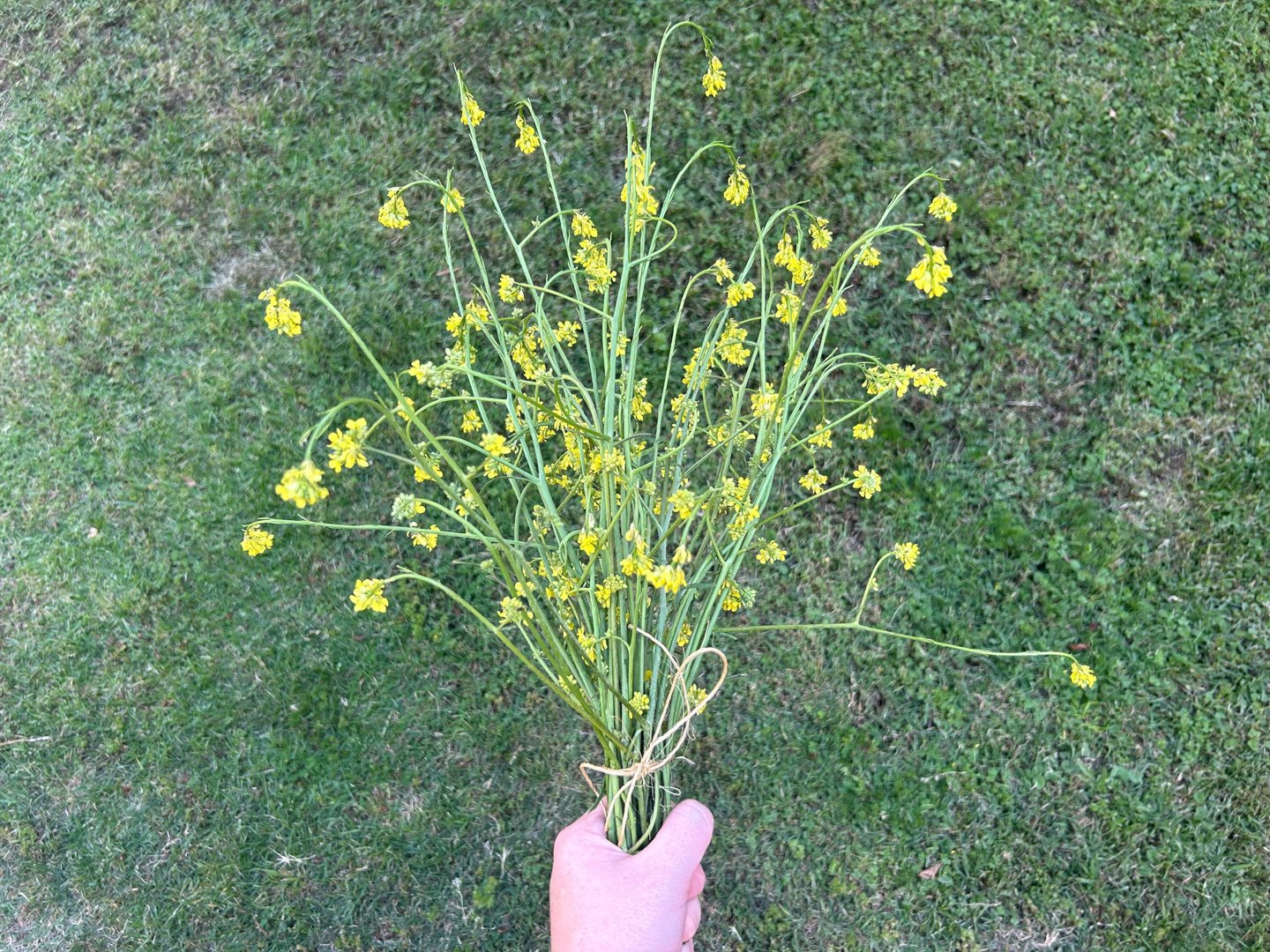If you live in Southern California, you’re probably familiar with the ubiquitous black mustard plant. Every spring, its bright yellow flowers blanket our hillsides, freeway medians, parks—basically, anywhere there’s a patch of dirt, mustard will grow.
It’s a plant that thrives in disturbed areas—and unfortunately, it often disturbs the habitat around it, too. Considered invasive in California, black mustard produces allelopathic chemicals, which can stop native plants from growing. It can also increase fire risk when the plant dries out in the summer.

One way to help mitigate the mustard problem? Pick as much as you can! And you don’t have to throw it away, either. All parts of the plant are edible, from its roots to its flowers.
As we like to say, if you can’t beat it, eat it. Here are few ideas for how to make the most of foraged black mustard.
1. Add it to a salad

Salads are of the easiest ways to use black mustard. This works best in the spring, when the leaves are young and tender.
Both the leaves and flowers have a sharp, peppery flavor, which some compare to wasabi or arugula. Mix them in with your usual greens to spice things up—or toss them together with other edible invasive or non-native plants, like wild radish, lambs quarters, cheeseweed, nasturtium, or fennel.
2. Cook it

If the peppery flavor of black mustard is too much for you—or if you’re foraging late in the summer when the plants are tougher—you can cook or blanch the leaves to tone things down a bit. A member of the same family as kale, collards, and broccoli, mustard greens can be used in similar ways.
You can mix the leaves into recipes like saag paneer, crisp them into “chips” in the oven, or sauté them up with a bit of oil and garlic. Or, try our recipe for a delicious pea and mustard pasta sauce:
3. Pickle or ferment it
If you’ve gathered more mustard than you can possibly eat before it goes bad, experiment with pickling or fermenting the leaves, roots, or seeds! Add mustard to kimchi for a little extra spice, or pickle the seeds to make a condiment you can use on sandwiches, salads, or meats.
4. Make mustard
You can, of course, make actual mustard out of the seeds too! Collecting enough of them can be a little time consuming, but if you want to give it a shot, wait until the pods dry out in June or July, shake out the seeds, grind them up, and use them in your mustard recipe of choice.
5. Arrange an invasive bouquet

If eating foraged foods isn’t your thing—or if you just don’t enjoy the strong taste of black mustard—consider making it into a bouquet instead. If you can, we recommend arranging it with other invasive species, such as wild radish flowers or scotch broom. Just remember, always pull the flowers out by the root so they don’t grow back again next year!

